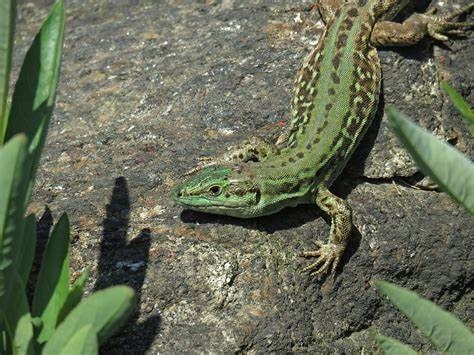
Lurking in my chopped wood pile, on my cool concrete landing and in the ivy canopy of my backyard in New Hyde Park are dozens of little lizards, Italian wall lizards to be exact. The experience catches me off guard each spring when they emerge. Here’s a little backstory about these miniature Mediterranean monsters from the Department of Environmental Conservation (DEC).
Also known as the ruin lizard, the Italian wall lizard is not native to New York. Originally from the Mediterranean area, it was introduced around 1967 in the Town of Hempstead, most likely the result of an accidental escape from a captive population believed to be from Rome, Italy. It adapted well to urban and suburban settings, and is now permanently established on western Long Island and in isolated pockets in New York City as far north as the Bronx.
Italian wall lizards are active in New York from April to October. Their diet consists primarily of insects. During the winter months they become inactive and have little freeze tolerance. As such, they are not likely to spread much further north. Breeding takes place during the spring and summer. House cats and some species of birds are believed to be their main predators.
While adult Italian wall lizards are highly variable in color and pattern, they are generally tan with green on the head, neck, and most of the upper body. Younger lizards are duller with no green and have distinct dorsal stripes. In addition, their underside is white and they may have various dark markings on the body. Males are larger than females.

Escape Artists
Lizards have a unique way of escaping capture—their tails break off when grasped by potential predators such as snakes, birds, mammals and even other lizards. Muscles within an unattached tail then cause it to twitch for several minutes, hopefully distracting a predator’s attention long enough to allow the lizard to escape. The tail will regenerate, but it will not obtain the length or color of the original tail.
Although natural range expansion associated with an invasive species undoubtedly helped the dispersal of the Italian wall lizard, deliberate relocation of individuals from the core population is likely responsible for their rapid spread in the last 10 years. Release of these lizards, or any wildlife, is illegal without a permit. While often well-intentioned, such releases can introduce diseases to native wildlife populations and upset natural predator-prey relationships that have evolved over millennia.
—Department of Environmental Conservation (DEC) and Christy Hinko


































